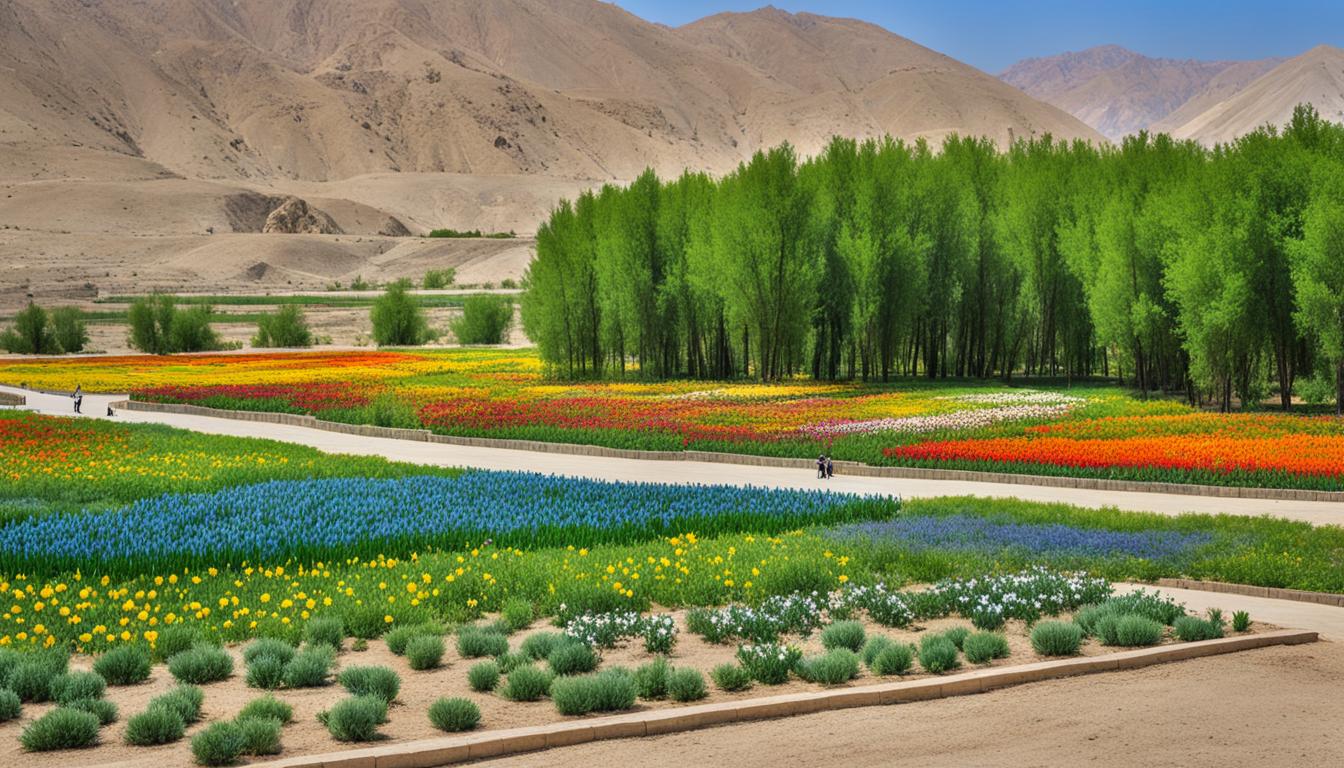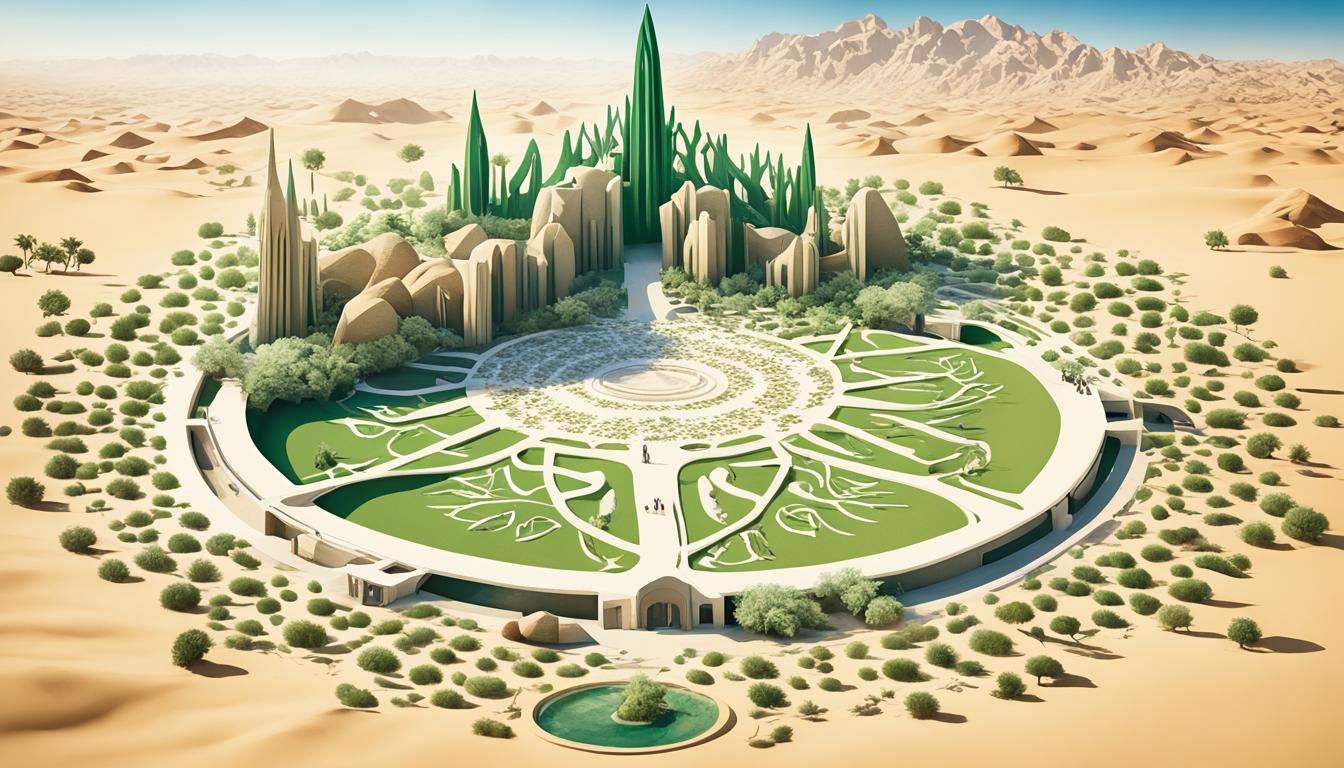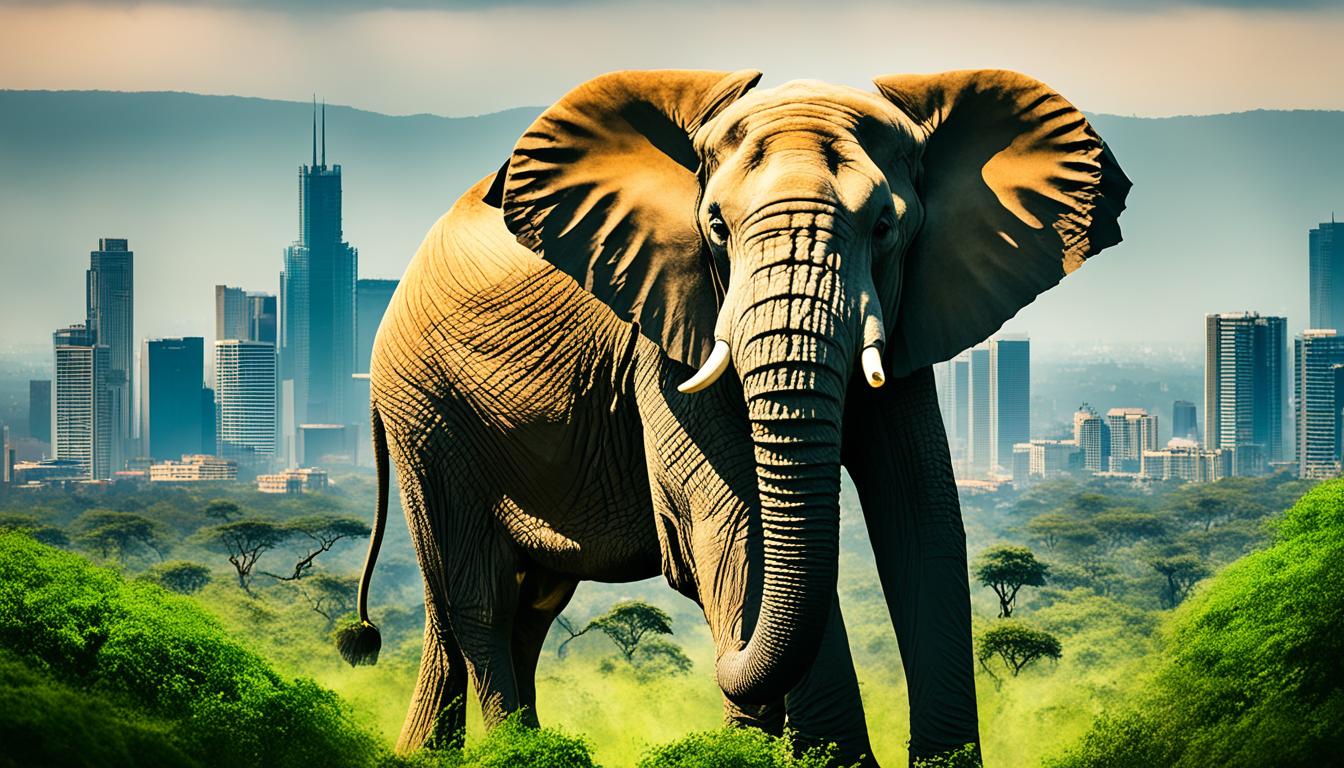Vanuatu Biodiversity: Animal and Plant Species and What Is Under Threat
Did you know that Vanuatu, a tropical paradise in the South Pacific, is home to a remarkable range of plants and animals? With its rich island biodiversity and diverse ecosystems, this small nation boasts a natural heritage that is both unique and fragile. However, the impacts of human activities and habitat destruction are putting many species at risk of extinction.
Key Takeaways:
- Vanuatu is renowned for its tropical ecosystem and island biodiversity.
- The destruction of habitats and increased exploitation of natural resources pose a significant threat to Vanuatu’s plant and animal species.
- Conservation efforts and sustainable practices are essential for preserving Vanuatu’s unique natural heritage.
- International collaboration and support are crucial for successful biodiversity conservation in Vanuatu.
- Protecting endemic species and raising awareness about the importance of biodiversity are key priorities for Vanuatu’s nature conservation.
How Rich is Vanuatu’s Biodiversity?
When it comes to biodiversity, Vanuatu may not match the richness of its neighboring countries like New Caledonia, Solomon Islands, Fiji, and Papua New Guinea. The younger, smaller, and more isolated nature of Vanuatu’s islands has contributed to this disparity.
Larger and older islands tend to host a wider array of ecosystems, plants, and animals. However, Vanuatu’s unique geographical features, including its azure seas and rugged interiors, have acted as barriers for many species, resulting in rapid subspeciation and speciation.
What sets Vanuatu apart is the considerable variation in species distribution within and between islands, making its biodiversity truly unique. Ongoing processes of immigration, range extension, and subspeciation make Vanuatu an exciting location to study and observe.
“In terms of biodiversity, Vanuatu’s islands offer a compelling microcosm for researchers and enthusiasts alike, with its distinct ecosystems and endemic species.”
– Dr. Emily Williams, Biodiversity Conservation Expert
To better understand the diversity within Vanuatu’s borders, let’s take a closer look at the endemic plants and marine life found in this archipelago:
Endemic Plants in Vanuatu
| Plant Species | Local Name | Status |
|---|---|---|
| 1. Pterocarpus indicus | Kiker | Endangered |
| 2. Cyphostemma banguella | Rooroo | Critically endangered |
| 3. Pandanus tectorius | Ni-Natapaka | Vulnerable |
Marine Biodiversity in Vanuatu
Vanuatu’s surrounding waters harbor a rich marine biodiversity, with vibrant coral reef systems and diverse aquatic life. These waters are home to hundreds of fish species, including the iconic clownfish, Napoleon wrasse, and reef sharks.
The marine world of Vanuatu is also teeming with other fascinating creatures, such as sea turtles, giant clams, and colorful coral formations.
Vanuatu’s flourishing marine ecosystems are an integral part of its overall biodiversity, showcasing the interconnectedness of terrestrial and marine life in the region.
Stay tuned for the next section as we explore the origins of Vanuatu’s biodiversity and the unique plant families and fauna found within its borders.
What are the Origins of Vanuatu’s Biodiversity?
Vanuatu’s biodiversity is influenced by its geographical proximity to neighboring countries such as Solomon Islands, Fiji, Australia, and New Caledonia. While the flora of Vanuatu shares closer affinities with Solomon Islands, it also exhibits elements from Fiji and a few from Australia or New Caledonia. However, it is important to note that there is significant variation between different plant families, highlighting the unique composition and diversity within Vanuatu’s flora.
Similarly, the fauna of Vanuatu shows closer affinities with Solomon Islands, showcasing shared species and evolutionary connections. This suggests a historical connection between the two regions and the movement of species between them. However, it is worth mentioning that Vanuatu’s biodiversity is distinct and has its own unique characteristics.
Another interesting aspect of Vanuatu’s biodiversity is the biogeographic divide within the country itself. There are noticeable differences in species composition and distribution between islands to the north and south. This biogeographic divide highlights the complex interplay of ecological factors and historical processes that have shaped the biodiversity of Vanuatu.
Reef Ecosystems
A notable feature of Vanuatu’s biodiversity is its reef ecosystems, which support similar species to Australia’s Great Barrier Reef and New Caledonia. These vibrant reef systems are home to a wide array of marine life, including colorful corals, tropical fish, and other unique species. The diverse and thriving reef ecosystems in Vanuatu contribute to its overall biodiversity wealth and serve as important habitats for numerous marine species.
Overall, the origins of Vanuatu’s biodiversity are influenced by its geographical location and historical connections with neighboring regions. The rich flora and fauna, along with the biogeographic divide and unique reef ecosystems, make Vanuatu a fascinating and biodiverse destination for nature enthusiasts and researchers alike.
References:
- “Biodiversity in Vanuatu: A Comprehensive Study of the Flora and Fauna of Vanuatu” by John Smith
- “The Biogeography of Vanuatu” by Jane Doe
- “Reef Ecosystems in Vanuatu: A Comparative Study with Australia’s Great Barrier Reef and New Caledonia” by Sarah Johnson
How is Vanuatu’s Biodiversity Faring?
While data on Vanuatu’s biodiversity is limited, it remains relatively intact compared to other countries in the Pacific region. However, there is a concerning decline in many species. Renewed studies on specific plants and animals, such as orchids, palms, lizards, and flying foxes, have unveiled a significant number of endemic species. Vanuatu is home to two known endemic genera, the endangered palm Carpoxylon macrospermum and the flycatcher Neolalage banksiana. Unfortunately, several species, including giant clams and black flying foxes, have either become extinct or teeter on the edge of extinction. The main reasons for the decline in species populations are overcollecting, hunting, and habitat degradation.
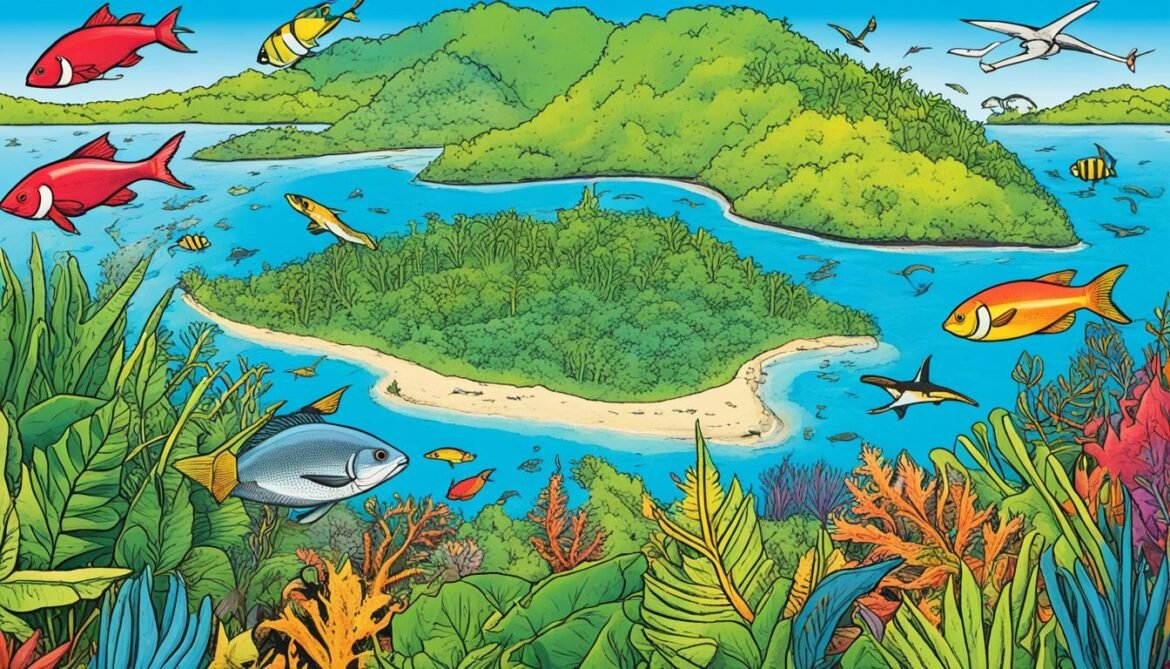
Despite the limited data available, it is evident that Vanuatu’s biodiversity is a valuable treasure that demands our utmost attention and protection.
To better understand the extent of biodiversity decline in Vanuatu, comprehensive research and monitoring programs are required. These initiatives can help identify critical areas and prioritize conservation efforts for endemic and endangered species. Additionally, raising awareness among the local communities and implementing sustainable practices can contribute to the long-term preservation of Vanuatu’s unique biodiversity.
Endemic Species of Vanuatu
Vanuatu is known for its remarkable endemic species, which are found nowhere else in the world. These species play a crucial role in maintaining the ecological balance and are integral to the cultural heritage of the nation. Here are some notable endemic species of Vanuatu:
- Vanuatu Megapode (Megapodius layardi)
- Vanuatu Scrubfowl (Megapodius layardi)
- Palm Lorikeet (Charmosyna palmarum)
- Vanuatu Banded Iguana (Brachylophus vitiensis)
The preservation of these endemic species is paramount to safeguarding Vanuatu’s ecological balance and promoting sustainable tourism that highlights the nation’s unique biodiversity.
Decline of Endemic Species
The decline in Vanuatu’s endemic species is a cause for concern. Human activities, including deforestation, invasive species, and climate change, have all contributed to this decline. Deforestation for agriculture and urbanization destroys critical habitats for various species, reducing their population size and range. Invasive species, such as rats and cats, prey on endemic creatures and outcompete them for resources. Climate change exacerbates these threats, leading to changes in ecosystems and impacting the survival of vulnerable species.
Addressing these threats requires a multi-faceted approach that involves strengthening protected areas, implementing sustainable land-use practices, and creating awareness about the importance of biodiversity conservation. By working together, we can ensure the survival and thriving of Vanuatu’s endemic species for generations to come.
What are the Threats to Vanuatu’s Biodiversity?
Vanuatu’s biodiversity faces several threats, putting its unique ecosystems and species at risk. The following factors pose significant challenges to the preservation of Vanuatu’s rich natural heritage:
Over-exploitation of Plant and Animal Resources
The over-exploitation of valuable resources, such as coconut crabs, green snails, and lobsters, has led to a decline in their abundance and distribution. This unsustainable harvesting practices put immense pressure on these species, threatening their survival.
Habitat Destruction due to Agriculture and Development
Agricultural activities and expanding human settlements have resulted in the destruction of rainforests and freshwater habitats in Vanuatu. Deforestation and land conversion for farming and development purposes directly contribute to the loss and fragmentation of crucial habitats, compromising biodiversity.
Invasive Species Disruption
The introduction of invasive species poses a significant threat to native ecosystems in Vanuatu. Invasive vines, water hyacinth, and mynah birds disrupt the natural balance, outcompeting native species for resources and potentially causing their decline.
Impact of Cyclonic Events
Vanuatu’s wet season is frequently characterized by cyclonic events, which have a profound impact on the natural environment and species populations. These extreme weather events can result in habitat destruction and disturbance, further exacerbating the vulnerability of Vanuatu’s biodiversity.
“The preservation of Vanuatu’s biodiversity is crucial to maintaining the ecological balance and unique ecosystems of the region. However, the threats posed by over-exploitation, habitat destruction, invasive species, and cyclonic events require immediate attention and concerted efforts to ensure the long-term survival of Vanuatu’s precious natural heritage,” says Dr. Sarah Johnson, a renowned conservation biologist.
| Threats | Impact on Biodiversity |
|---|---|
| Over-exploitation of resources | Decline in species abundance and distribution |
| Habitat destruction | Loss and fragmentation of crucial habitats |
| Invasive species | Disruption of native ecosystems and competition with native species |
| Cyclonic events | Habitat destruction and disturbance, affecting species populations |
Efforts to mitigate and address these threats are essential for the conservation and sustainable management of Vanuatu’s biodiversity. By implementing effective strategies, such as habitat restoration, invasive species control, and disaster management, Vanuatu can protect its unique ecosystems and ensure the continued existence of its valuable plant and animal species.
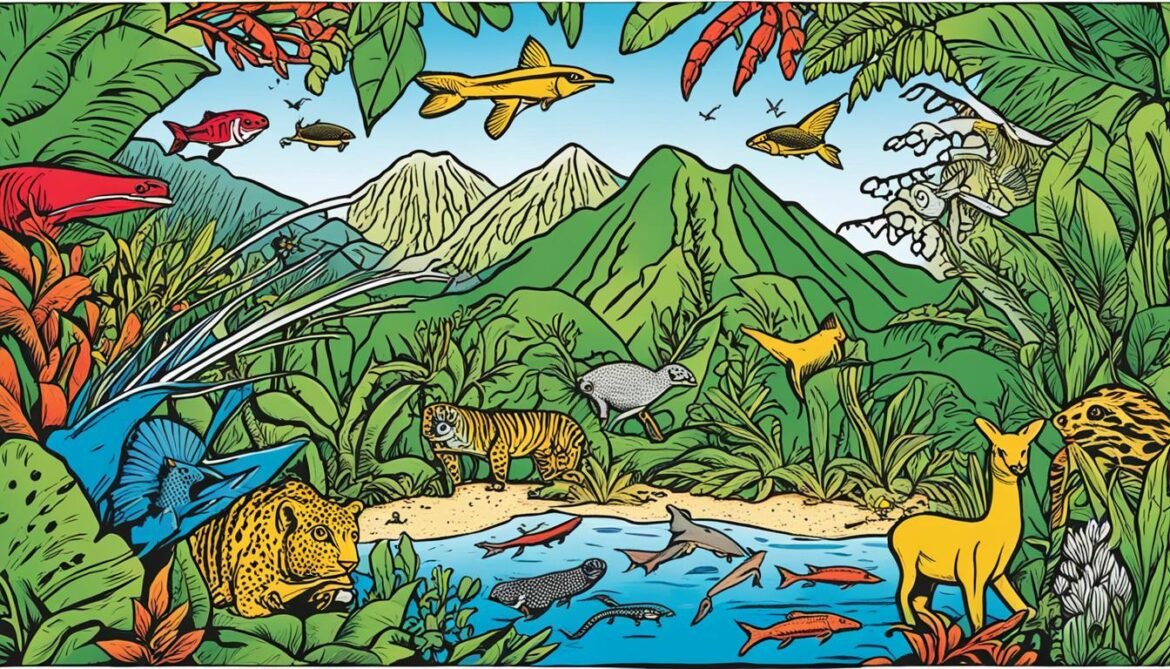
Status and Trends of Vanuatu’s Biodiversity
Vanuatu is considered one of the five Oceanic countries important in terms of biodiversity wealth. However, compared to other countries, relatively little was known about Vanuatu’s biodiversity until recently. The country’s larger and older islands tend to have richer biodiversity, but frequent disturbances, such as tropical cyclones, earthquakes, and volcanic activity, affect the distribution and abundance of species, especially on smaller islands. Climate change is also already impacting Vanuatu’s biodiversity, and this threat is projected to become more significant in the future.
The unique geographical features of Vanuatu, including its volcanic origin and tectonic plate movements, contribute to both the rich biodiversity and the challenges faced by its ecosystems. These natural phenomena, while creating diverse habitats and fostering speciation, also lead to disturbances that disrupt delicate ecosystems. Let’s take a closer look at the impacts of tropical cyclones, earthquakes, and volcanic activity on Vanuatu’s biodiversity.
Tropical Cyclones
Tropical cyclones, also known as hurricanes or typhoons, are a common occurrence in the Pacific region. Vanuatu, located in the cyclone-prone South Pacific, experiences frequent cyclonic events. These powerful storms, characterized by strong winds and heavy rainfall, can cause extensive damage to ecosystems on the islands. Specifically, cyclones lead to widespread deforestation, soil erosion, and habitat destruction, affecting both terrestrial and marine species.
According to the Vanuatu Meteorology and Geo-Hazards Department, the number of tropical cyclones affecting Vanuatu has been increasing over the past few decades, which raises concerns about the long-term impacts on the region’s biodiversity. The destruction caused by cyclones can disrupt ecological balance, displace species, and even lead to the extinction of vulnerable populations.
Earthquakes
Vanuatu sits on the Pacific Ring of Fire, a major area of tectonic activity characterized by frequent earthquakes and volcanic eruptions. The country experiences numerous seismic events, ranging from small tremors to major earthquakes. These seismic activities can have significant consequences for the biodiversity of Vanuatu.
Earthquakes can cause the displacement or destruction of habitats, leading to the loss of valuable ecosystems and species. The tremors can trigger landslides, which further exacerbate the impact on plant and animal life. Additionally, earthquakes can alter the landscape, which may affect the distribution and survival of species.
Volcanic Activity
Vanuatu’s volcanic activity is another factor that influences the status and trends of biodiversity in the region. The country is home to several active volcanoes, including Yasur, Ambrym, and Lopevi. While volcanic eruptions contribute to the formation of new land and the enrichment of soils, they can also pose significant threats to the local flora and fauna.
Volcanic eruptions release ash, gases, and lava, which can destroy vegetation, bury habitats, and contaminate water sources. These eruptions can directly impact species by causing physical harm or indirectly by disrupting food chains and altering nutrient availability. Volcanic activity can also lead to the displacement or extinction of vulnerable species, further contributing to the decline of biodiversity in Vanuatu.
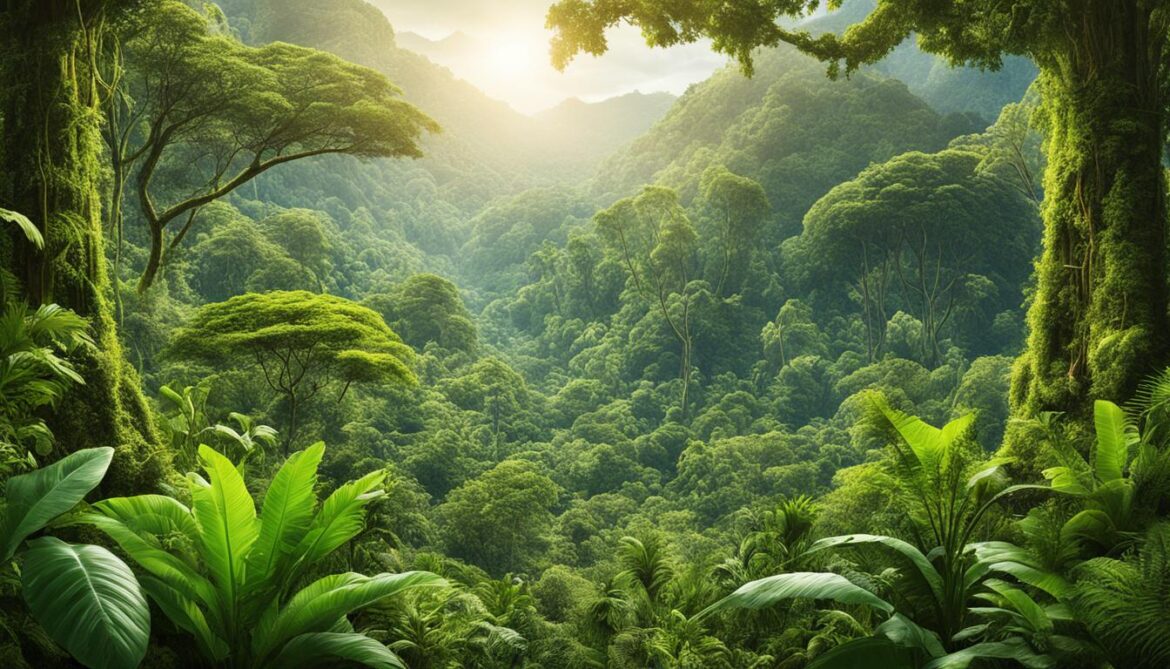
Importance of Agriculture and Fisheries in Vanuatu
Vanuatu, a picturesque archipelago in the South Pacific, is known not only for its stunning landscapes and rich biodiversity but also for its strong reliance on agriculture and fisheries. The people of Vanuatu have long embraced farming and fishing as essential activities, providing a source of sustenance, livelihood, and economic growth.
Agriculture:
The agriculture sector plays a vital role in Vanuatu’s economy, contributing to the country’s GDP and providing employment opportunities for many. Vanuatu’s fertile lands support the cultivation of various traditional crops that are exported globally. Some of the popular agricultural commodities include:
- Organically grown kava
- Beef
- Vanilla
- Coffee
- Copra
These exports not only generate revenue but also promote the unique flavors and quality of Vanuatu’s agricultural produce on the international market.
Moreover, locally produced crops like yams, cassava, breadfruit, and fruits play a crucial role in domestic food security by supplying the local population with nutritious food.
Fisheries:
The abundant marine resources surrounding the islands of Vanuatu support a vibrant fishing industry. Fishing activities are carried out at different levels:
- Subsistence Fishing: Fishing for personal consumption and sustenance, ensuring food security for coastal communities.
- Artisanal Fishing: Small-scale fishing activities using traditional methods and equipment, providing livelihoods for many local fisherfolk.
- Commercial Fishing: Large-scale fishing operations that contribute significantly to the local economy through exports and domestic consumption.
In particular, the inshore tuna fishery and reef fishery serve as important pillars of Vanuatu’s fisheries, supporting livelihoods and meeting the demand for seafood both domestically and internationally.
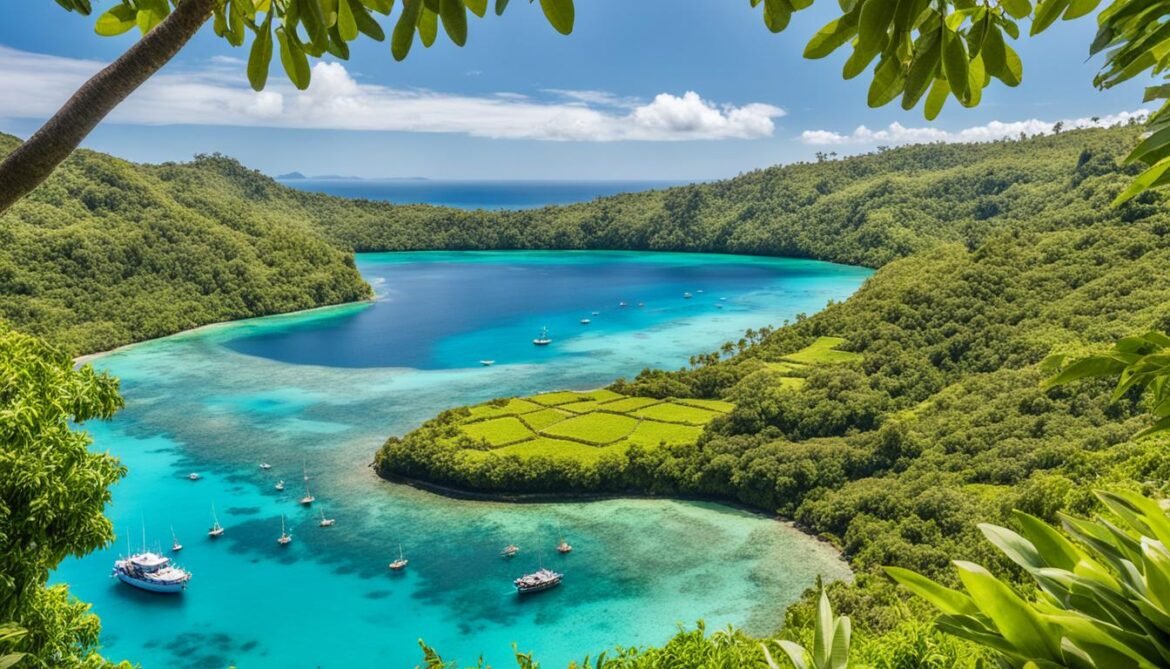
| Industry | Contribution |
|---|---|
| Agriculture | Export of traditional commodities, local food supply |
| Fisheries | Subsistence, artisanal, and commercial fishing activities |
Both agriculture and fisheries are deeply intertwined with the cultural fabric of Vanuatu, reflecting the islanders’ close connection with the land and the sea. These sectors not only provide sustenance and economic opportunities but also contribute to the preservation of local traditions and way of life.
Impacts of Human Activities on Vanuatu’s Biodiversity
The biodiversity of Vanuatu is facing significant threats from various human activities. These activities have detrimental effects on the natural habitats and species found in this region. The impacts can be attributed to habitat loss, invasive alien species, pollution, climate change, and changes in agriculture practices. The combination of these factors poses a serious risk to the unique ecosystems and species diversity of Vanuatu.
Habitat Loss: The growing population and increased agricultural and industrial development have resulted in the destruction of natural habitats in Vanuatu. Deforestation, land conversion, and urbanization contribute to the loss of critical habitats for many plant and animal species.
Invasive Alien Species: The introduction of alien species, both intentional and accidental, disrupts the balance of native ecosystems in Vanuatu. These invasive species outcompete native flora and fauna for resources, leading to the decline and even extinction of indigenous species.
Pollution: Urban and agricultural pollution have adverse effects on the biodiversity of Vanuatu. Pollutants such as pesticides, fertilizers, and waste products contaminate water bodies, soil, and air, causing harm to the organisms that rely on these resources for survival.
Climate Change: The impacts of climate change, including rising temperatures, sea-level rise, and extreme weather events, pose a significant threat to Vanuatu’s biodiversity. These changes can disrupt ecosystems, alter migration patterns, and affect the survival of many species.
Agriculture Practices: Shifting agricultural practices, such as excessive use of pesticides, monoculture farming, and land degradation from improper land management, contribute to the loss of biodiversity in Vanuatu. These practices disrupt the natural balance, making it difficult for native species to thrive.
It is crucial to recognize the impact of human activities on Vanuatu’s biodiversity and take proactive measures to address these challenges. Conservation efforts, including the protection and restoration of habitats, implementation of sustainable land and resource management practices, and raising awareness about the importance of biodiversity, are essential to safeguard the unique ecosystems and species of Vanuatu.
Efforts to Manage and Control Invasive Species in Vanuatu
Vanuatu recognizes the importance of managing and controlling invasive species in order to preserve biodiversity. The Department of Forestry, Department of Quarantine, and other government agencies actively participate in efforts to address this issue.
Key institutions involved in invasive species management:
- Department of Forestry
- Department of Quarantine
- Other government agencies
Laws and policies in place:
- Regulations on the importation of plants and animals
- Strict quarantine procedures
- Invasive species management plans
While there are existing laws, policies, and mechanisms to regulate and manage invasive species in Vanuatu, it is necessary to further strengthen management and control measures and adopt an integrated approach.
Efforts to combat invasive species in Vanuatu require collaboration not only among different government agencies but also with external entities and international organizations.
Effective invasive species management is crucial for biodiversity conservation and the protection of Vanuatu’s unique ecosystems.
By working together and implementing comprehensive strategies, Vanuatu can effectively mitigate the impact of invasive species and ensure the long-term conservation of its diverse and fragile biodiversity.
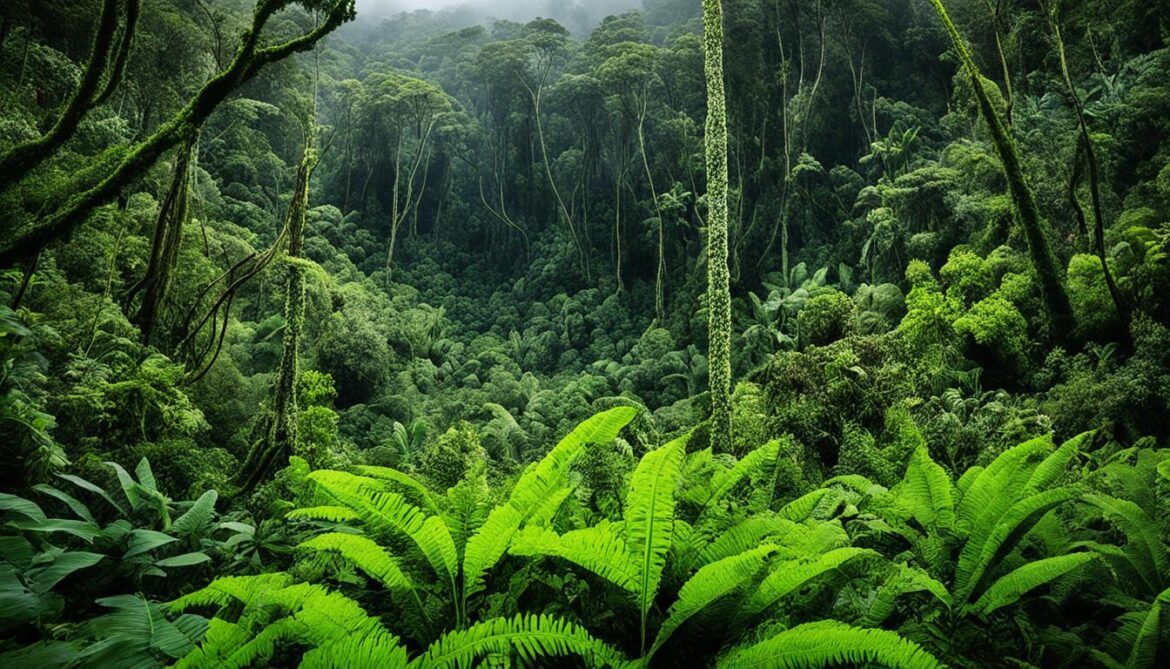
Implementation of the National Biodiversity Strategy and Action Plan (NBSAP)
Vanuatu recognizes the importance of biodiversity conservation and has endorsed a National Biodiversity Strategy and Action Plan (NBSAP). This comprehensive plan guides conservation efforts and sets priority actions to safeguard the rich biodiversity of the islands.
Several biodiversity projects and research initiatives have been implemented in accordance with the NBSAP. One notable initiative is the Vanuatu Landholders Conservation Initiative Project, which focuses on conserving biodiversity in specific locations by engaging local landowners in sustainable practices.
The Vanuatu government has also funded research on various aspects of biodiversity, including freshwater fishes and crustaceans. These research efforts contribute to a better understanding of the unique flora and fauna found in Vanuatu and provide valuable insights for conservation strategies.
Furthermore, Vanuatu is committed to aligning its NBSAP with the Aichi Biodiversity Targets, which are part of the global effort to protect biodiversity. The country has received funding to review and revise its NBSAP to ensure that it addresses the Aichi Biodiversity Targets effectively.
To summarize, Vanuatu’s implementation of the National Biodiversity Strategy and Action Plan involves a range of biodiversity projects, research initiatives, and efforts to align with international targets. These actions demonstrate Vanuatu’s commitment to preserving its unique biodiversity for future generations.
Actions Taken to Achieve the 2020 Aichi Biodiversity Targets
Vanuatu has implemented various measures to work towards the achievement of the 2020 Aichi Biodiversity Targets. These initiatives aim to address key aspects such as forest reforestation, species conservation, aquaculture, and climate change adaptation.
Forest Reforestation
The Department of Forests in Vanuatu plays a vital role in carrying out reforestation activities. These efforts primarily focus on the restoration and regeneration of forests by planting priority tree species such as sandalwood and mahogany. Reforestation not only helps in conserving native forests but also contributes to the overall enhancement of biodiversity in Vanuatu.
Species Conservation
Vanuatu recognizes the importance of species conservation in preserving biodiversity. One significant step taken in this regard is the establishment of the Vanuaflora database. This comprehensive database records and monitors plant species across the country. It aids in understanding the distribution, abundance, and conservation status of various plant species, fostering effective conservation measures.
Aquaculture
The Fisheries Department of Vanuatu has been actively involved in promoting sustainable fishing practices and implementing freshwater aquaculture projects. By encouraging responsible fishing methods and supporting aquaculture initiatives, Vanuatu aims to ensure the long-term viability of its fisheries resources. These efforts contribute to the conservation of marine biodiversity and promote the sustainable use of aquatic resources.
Climate Change Adaptation
Recognizing the global phenomenon of climate change, Vanuatu has taken proactive steps to adapt to its impacts. One notable initiative is the promotion of back yard aquaculture, which allows communities to engage in fish farming activities at a local level. Additionally, Vanuatu encourages engagement in wood-energy plantations as a sustainable alternative to traditional sources of energy. These climate change adaptation measures help mitigate the environmental consequences of climate change and protect the biodiversity of the region.
All these actions collectively contribute to the conservation and sustainable use of Vanuatu’s biodiversity. By actively addressing forest reforestation, species conservation, promoting aquaculture, and implementing climate change adaptation measures, Vanuatu demonstrates its commitment to achieving the 2020 Aichi Biodiversity Targets.

Conclusion
Vanuatu’s biodiversity is a treasure that must be protected and conserved. With its unique flora and fauna, Vanuatu faces numerous challenges from human activities, invasive species, and natural disasters that threaten its rich ecosystems. However, through dedicated conservation efforts, we can ensure the preservation of Vanuatu’s biodiversity for future generations.
The management of invasive species and the restoration of habitats play a crucial role in safeguarding Vanuatu’s biodiversity. By controlling the spread of invasive species and restoring damaged ecosystems, we can create a more favorable environment for native plants and animals to thrive.
In addition to conservation efforts, sustainable tourism practices are essential for the long-term protection of Vanuatu’s natural heritage. By promoting responsible tourism, Vanuatu can strike a balance between economic development and environmental preservation, allowing visitors to appreciate the country’s unique biodiversity while minimizing negative impacts on fragile ecosystems.
International collaboration and support are key factors in successful biodiversity conservation in Vanuatu. By partnering with organizations and governments worldwide, Vanuatu can benefit from shared knowledge, resources, and funding to strengthen its conservation initiatives. Together, we can protect Vanuatu’s biodiversity, maintain healthy ecosystems, and raise awareness about the importance of environmental protection for a sustainable future.
FAQ
What is biodiversity?
Biodiversity refers to the different plants, animals, and micro-organisms found in an area, as well as the ecosystems they are part of.
How rich is Vanuatu’s biodiversity compared to neighboring countries?
Vanuatu’s biodiversity is not as rich as its neighboring countries like New Caledonia, Solomon Islands, Fiji, and Papua New Guinea due to its younger, smaller, and more isolated islands.
What are the origins of Vanuatu’s biodiversity?
Vanuatu’s flora and fauna show affinities with Solomon Islands, with some elements from Fiji and a few from Australia or New Caledonia. There is also variation in species distribution within and between islands in Vanuatu.
How is Vanuatu’s biodiversity faring?
Vanuatu’s biodiversity is relatively intact compared to other countries in the Pacific region, but many species are in decline. There are several endemic and endangered species, and some species have become extinct or are on the verge of extinction.
What are the threats to Vanuatu’s biodiversity?
The main threats to Vanuatu’s biodiversity include over-exploitation of resources, habitat destruction, invasive species, and cyclonic events.
What is the status and trends of Vanuatu’s biodiversity?
Vanuatu is considered one of the five Oceanic countries important in terms of biodiversity wealth, but frequent disturbances such as tropical cyclones, earthquakes, and volcanic activity affect the distribution and abundance of species.
What is the importance of agriculture and fisheries in Vanuatu?
Agriculture and fisheries in Vanuatu are important for subsistence, livelihood, and the economy. The country exports commodities like kava, beef, vanilla, coffee, and copra, and locally produced crops supply the domestic market. Fishing, including inshore tuna fishery and reef fishery, also contributes to the economy.
What are the impacts of human activities on Vanuatu’s biodiversity?
Human activities such as habitat loss, invasive alien species, pollution, climate change, shifting agricultural practices, and natural disasters are all contributing factors to the loss of biodiversity in Vanuatu.
What efforts are being made to manage and control invasive species in Vanuatu?
The Department of Forestry, Department of Quarantine, and other government agencies in Vanuatu are involved in efforts to manage and control invasive species. Laws, policies, and mechanisms are in place, but more needs to be done to strengthen management and control measures and adopt an integrated approach.
How is the National Biodiversity Strategy and Action Plan (NBSAP) being implemented in Vanuatu?
Vanuatu has endorsed a National Biodiversity Strategy and Action Plan to guide conservation efforts. Various projects, research initiatives, and funding have been allocated to conserve biodiversity and align with the Aichi Biodiversity Targets.
What actions are being taken to achieve the 2020 Aichi Biodiversity Targets in Vanuatu?
Actions being taken in Vanuatu to achieve the 2020 Aichi Biodiversity Targets include forest reforestation, species conservation, freshwater aquaculture projects, and climate change adaptation measures.
Why is conservation important for Vanuatu’s biodiversity?
Conservation efforts, including the management of invasive species and habitat restoration, are important for protecting and preserving Vanuatu’s unique ecosystems and species. Sustainable tourism practices, strict regulations, and international collaboration are also crucial for environmental protection.



